Daylight Savin’ by The Dime Notes
TRACKLIST & AUDIO
https://thedimenotes.com
BACK TO THE RECORDS
PRESS
THE SUNDAY TIMES UK
THE JAZZ RAG UK
VINTAGE JAZZ MART UK
SYNCOPATED TIMES US
LA JAZZ SCENE US
THE SUNDAY TIMES UK
JAZZ JOURNAL UK
ACKER BILK
KMHD JAZZ RADIO USA
ALL ABOUT JAZZ USA
EVAN CHRISTOPHER
JAZZ JOURNAL
CLASSICA FRANCE
REVIEWS
JAZZ JOURNAL UK 13.12.2020
Daylight Savin’ by The Dime Notes
Since their first and well-received album in 2016, the UK-based Dime Notes have been busy globetrotting as expert exponents of classic New Orleans style hot jazz. This second release is on similar lines to the first, with particular attention paid to the legacy of Jelly Roll Morton (American pianist Andrew Oliver and UK clarinettist David Horniblow had made a special study of Morton’s music in 2018 for their Morton Project album).
The Chant, though written by Mel Stitzel, is primarily associated with Morton’s recorded version, and the lively quartet performance here follows the basic shape of the striking arrangement on the Red Hot Peppers recording – as does Grandpa’s Spells, with guitarist Dave Kelbie featured, expanding on Johnny St. Cyr’s breaks. Fickle Fay Creep is expressively performed with sensitive rapport in a tasteful arrangement, whilst the appropriately titled Pep is is a joyfully upbeat quartet reworking of a Morton piano solo. Jelly bows out on the album with a late composition, the wistfully appealing Why.
The accompanying interesting and unhackneyed selection of tunes associated with other artists kicks off with a relaxed but brightly swinging treatment of Jimmy Noone’s El Rado Shuffle, and features a couple of James P. Johnson blues numbers, including title track Daylight Savin’. Rarely performed, Jesse Pickett’s The Dream is strikingly exotic with its very Mortonish “Spanish tinge”.
Ten Cent Rhythm is a sprightly Andrew Oliver original in stomping stride style. Pièce de résistance is perhaps the blistering, breakneck version of Ellington’s Jubilee Stomp, convincingly performed by these accomplished musicians.
A versatile and experienced new bassist, Louis Thomas, is well featured, his full steady beat blending comfortably with Dave Kelbie’s supple guitar. The duo swing supportively behind Horniblow’s fluent and vibrantly expressive phrasing (echoing the likes of Noone, Bigard and Simeon), and the vigorous and inventive rhythmic patterns and rich harmonic fullness of Oliver’s inspiring keyboard input.
This is convincingly performed vintage hot jazz, with a present-day freshness and commitment.
HUGH RAINEY
JAZZ LIVES US 10.12.2020
THEY HAVE FUN. WE DO, TOO: “DAYLIGHT SAVIN’,” by THE DIME NOTES
I know how hard improvising in public is, but I’ve been in situations where singularly gifted musicians are simply “doing their job” and we can all hear it. Perhaps it’s the last tune of an exhausting festival set; perhaps someone in the band had a marital argument earlier or has to use the facilities very shortly.
But there are performances and recordings joyous from the first notes. Not volume or speed: rather, a collective pleased exuberance.
But I’m not surprised: after all, it’s the second CD by the wonderful DIME NOTES, made up of great players (and thinkers and feel-ers as well): Andrew Oliver, piano; David Horniblow, clarinet; Dave Kelbie, guitar; Louis Thomas, string bass. I was very pleased with their first effort, as you can read here — and when Andrew and David became the “Complete Morton Project,” every week brought a new YouTube video — jolts of pleasure at regular intervals.
Several things make this CD more than special. The repertoire is a lovely mix of classics and less-played tunes from the early jazz years: EL RADO SCUFFLE / THE CHANT / DAYLIGHT SAVIN’ BLUES / THE DREAM / GRANDPA’S SPELLS / FICKLE FAY CREEP / PEP / WORRIED AND LONESOME BLUES / TEN CENT RHYTHM (an original by Andrew) / WHY / JUBILEE STOMP / SAN // Of course there’s Mister Jelly, but also side-glances at James P. Johnson and others.
But I can hear some of you, those who grumble, “I have sixteen versions of SAN already. Why do I need this one?” — which has some validity. If you stop that grumbling, I will try to answer.
For one thing, that approach reminds me of the dusty joke, “Would you like a book for your birthday?” “No thanks, I already have a book.” The whole spirit of the music we love is in its ability to make the familiar fresh and gleaming. How many recordings do any of us have of slow twelve-bar blues? But we hope for more excitement, more “personality” to come from what we already know in its broad outlines. It’s especially true with THE DIME NOTES, who are a working band: they know the venerable recordings by heart; they have immersed themselves in the little details of those Gennetts and Vocalions. And they don’t strive to be “innovative” or “harmonically adventurous” in ways that would put a fez on the Mona Lisa. But each track on this CD has its own vivacious energy, as if someone had switched on an internal light. I hear things in these songs that I don’t expect to hear, and there is no museum-dust, no scent of antiquity. And because this is a working band, there is a special, charming unity: the way people who have been together for some time laugh at each other’s jokes, anticipate each other’s acts — in general, “play well with others.”
There’s a secret ingredient: that is, a large awareness that each of the four masterful players has, and it permeates the group. Leaving aside Andrew’s original, even though the newest song on this CD was composed more than eighty years ago, the music didn’t freeze in 1926. At the risk of offending those who like their jazz “pure,” whatever in the name of Eli Oberstein that means, this band knows how to play Twenties jazz with a buoyant swing feeling that perhaps Mel Stitzel was unaware of or not willing to attempt. I don’t mean genre-bending “Dixieland goes Modern,” but I do hear a joyous bounce throughout this session, and it makes the older material seem so shiny.
And that, dear comrades in jazz, is why this CD is memorable and will remain so through multiple playings.
MICHAEL STEINMAN
THE JAZZ RAG UK 02.11.2020
Daylight Savin’ by The Dime Notes
Guitarist Dave Kelbie’s Lejazzetal label has an enviable track record of releasing consistently good, if not excellent, recordings.
The Dime Notes’ latest album maintains the standard. Daylight Savin’ features Kelbie himself in the engine room alongside recent recruit Louis Thomas playing double bass, and the show-stopping clarinet-piano pairing of David Horniblow and Andrew Oliver.
In 2018 Horniblow and Oliver set themselves the task of learning all of Jelly Roll Morton’s compositions; The Complete Morton Project, also available on Lejazzetal, was the result. The Dime Notes’ liking for some of the lesser-known tunes of the 1920s and 30s led to Jelly Roll Morton’s Pep making the cut on the new album.
Whereas Morton recorded the tune as a solo piece, the Dime Notes have arranged it as a stomping set closer.Three other Morton numbers – Grandpa’s Spells, Fickle Fay Creep and Why – take their place on the 12-song CD. Perry Bradford supplies the title track and the Dime Notes’ take on Duke Ellington’s Jubilee Stomp is exceptional.
David Horniblow’s quicksilver clarinet is a delight,Andrew Oliver’s piano playing stands comparison with the very best of them and in forming an alliance with the Kelbie-Thomas rhythm section, Daylight Savin’ is a contender for album of the year.
RUSSELL CORBETT
VINTAGE JAZZ MART UK 11.11.2020
Daylight Savin’ by The Dime Notes
This CD is the second album from the ‘The Dime Notes’, accurately advertised on the Lejazzetal website as ‘Blues drenched clarinet-driven 1920’s New Orleans jazz with London’s hard-swinging vintage jazz band.’ This quartet consists of David Horniblow, clarinet; Andrew Oliver, piano; Dave Kelbie, guitar; and Louis Thomas, string bass. Messrs Horniblow and Oliver, two very gifted musicians from London and Portland, Oregon respectively, will be familiar to readers already, in particular for their recent albums including The Complete Morton Project and to British festival circuit frequenters. The owner of Lejazzetal and veteran of the group, Dave Kelbie has been active since the 1980s as a fine guitarist, particularly at solid ‘comping’ as well as soloing. Louis Thomas, from Devon, completes the line up on bass with an arsenal of dextrous techniques.
Daylight Savin’ fires off to a swinging start with their version of El Rado Scuffle, recorded by Jimmie Noone in 1930. David Horniblow has mastered the clarinet styles of greats such as Noone, Johnny Dodds, Omer Simeon, Barney Bigard, Jimmy Lytell and others. This is the appropriate recording to start the album with as we hear how adept David is in all registers, along with Andrew Oliver’s dextrous mastery of the keyboard over the rock solid foundation of Dave Kelbie’s rhythmic guitar and Louis Thomas’s propulsive bass, all of which are sustained throughout this CD. A lot happens musically in this first three and a half minutes and a neat ending concludes this fine opener. Incidentally, one minor point – the tune was actually composed by Fred Rose, not Jimmie Noone as per the sleeve.
It’s great to hear tunes like The Chant being recorded today. Unfortunately, it is one of those pieces that seem to have been inexplicably abandoned by 1930, at least on record. This fine tune, written by pianist Mel Stitzel who played with the ‘Bucktown Five’ and the ‘New Orleans Rhythm Kings’, and arranged for Melrose Bros. publishing, had a few different treatments from the Jelly Roll Morton stomp version to the bluesy Fletcher Henderson version, both recorded in 1926, to Omer Simeon’s ‘Dixie Rhythm Kings’ version three years later which lands somewhere in between. ‘The Dime Notes’ put their fine individual stamp on it to generate another swinging performance, while mainly following Morton’s routine with David and Andrew paying their respective homage to Omer Simeon and Jelly Roll.
Daylight Savin’ Blues is associated with the great stride master James P. Johnson, one of Andrew Oliver’s main influences, but was written by Perry Bradford and originally recorded under him with the ‘Gulf Coast Seven’. As expected, Andrew’s talent is featured heavily on this piece, with very effective support from the others. Louis Thomas’s bass playing is very strong on this track with plenty of slapping. A rousing final chorus leads to a cool surprise ending.
The Dream is a ragtime piece written around 1896 by one Jesse Pickett, an obscure unrecorded ragtime pianist whom Eubie Blake looked up to and who, according to Andrew Oliver’s sleeve notes, evidently died young from drug addiction. He also notes the deliberate use of Morton’s Spanish Tinge which is clearly audible. This beautiful chamber-jazz version is at times vaguely reminiscent of Morton’s The Crave, with sterling work by Andrew who is front and centre. There is great interplay from all with some tricky stops, starts and pauses; and Dave Kelbie’s very smooth, crisp rhythm guitar is particularly effective on this track.
Grandpa’s Spells is vintage Jelly Roll Morton with Dave nicely recreating the original breaks by both Johnny St. Cyr on guitar and George Mitchell on cornet. David pays his dues to Omer Simeon again, while Andrew pounds out some of his quality Morton-influenced piano, and Louis Thomas solos forcefully. The recording is capped off perfectly by Dave again with a tasty guitar end-tag of his own, closing as good a rendition as any of this Morton gem.
Fickle Fay Creep is another Jelly Roll classic and one of the more unique jazz pieces. Morton originally recorded it as Soap Suds with an obscure crew of unknowns as the ‘St. Louis Levee Band’ in the Gateway City for OKeh in 1926. It re-surfaced as Fickle Fay Creep on what turned out to be his last ‘Red Hot Peppers’ recording for Victor in 1930. Our quartet does an excellent job. The signature middle section with Andrew’s rocking piano and Dave’s steady guitar provide the perfect cushion for David’s long clarinet notes. Louis Thomas’s return to slapping his bass for the next two choruses sets things up for a rousing final chorus build up. They opt for the superior Soap Suds finale which Morton had curiously dropped in 1930, a great idea which along with above is how they do this tune justice.
Pep, recorded only as a solo by Jelly Roll Morton, first in 1929 for Victor and again in 1938 at the Library of Congress interviews, is given a band treatment here. This is not the first band recording – Dick Hyman did one in his 1974 Morton album. ‘The Dime Notes’ include the 1938 opening for the piece. Louis Thomas uses the bow well here, and the others drop out to give Andrew some solo space towards the end where he shines as always before the swinging out-chorus.
Worried And Lonesome Blues is a lively James P. Johnson composition which the band launch into with plenty of vigour. Andrew plays a superb solo, with more shades of Fats Waller than James P. Then there’s a sequence of stop-time and rhythm changes with breaks first by Dave Kelbie, and then by Louis Thomas bowing, followed later by another tricky series of breaks. Again, we hear fine comping from Dave throughout, anchoring the band perfectly. The final chorus is led by David’s Doddsian clarinet. They drop down a notch for a series of phrases leading to a satisfying blue note ending.
Ten Cent Rhythm is an Andrew Oliver original, keeping the musical ten-denomination American currency theme going. The piece is a stomp that shows off Andrew’s excellent technical acumen at the keyboard and his compositional skills. There is an interesting clarinet/guitar interlude towards the end which creates a nice contrast, leading into another fine out-chorus with a clean ending.
Why is another Morton piece from late in the great jazzman’s career, recorded with his ‘Hot Six’ for General in January 1940. The piece is one of his more commercial ones with a pleasant melody and featured a ‘croony’ vocal by Morton himself. The quartet keeps it instrumental and delivers a beautiful performance of this mellow tune. They also adjust their style accordingly to subtly and effortlessly let us know that this music is from a later period. Again, Dave does a top job with his rhythm. The composer credit isn’t quite correct on the sleeve – it was a co-composition by ‘Werac – Morton’. ‘Ed Werac’ was an alias for Morton’s confidant, friend and publisher in his later years, Roy J. Carew (1883-1967).
Jubilee Stomp comes from the Duke Ellington book. The great man seemed to drop the tune as quickly as he picked it up after recording it several times in 1928 in tempos that range from the leisurely medium-tempo Brunswick, through the fast versions for OKeh and Victor to, as Keith Nichols might say, the ‘tear-arse’ tempo of the Cameo version. ‘The Dime Notes’ choose around the latter pace and do the Duke and his men proud with their own very individual rendition which, like the originals, is short and sweet, and swings relentlessly.
They finish with San, which links back to the start via Jimmie Noone. This 1920 piece by Lindsay McPhail and Walter Michels has been interpreted in many ways. Its first recording in 1921 by ‘The Benson Orchestra of Chicago’ is a standard dance band run-through; Johnny Dodds’s 1927 trio version is medium-up-tempo with an oriental feel; Paul Whiteman’s 1928 version is an up-tempo, but lyrical rendering of Bill Challis’s arrangement by a band-within-the-band featuring Bix Beiderbecke, violinist Matty Malneck and guitarist Carl Kress; while Jimmie Noone’s 1930 recording is a full-steam-ahead stampede showcasing the great clarinetist’s awesome technique. The excitement of Noone’s version must have been too much for Vocalion as neither take was issued on 78, but both did surface over 35 years later, one each on Swaggie and Ace of Hearts LPs. ’The Dime Notes’ produce another of their own fine, individual interpretations with nods to Dodds, Noone, Whiteman and Morton’s Spanish tinge. After the rhythmic introduction, they proceed at approximately the Whiteman tempo. A series of breaks by all four players leads to a neat, clean finish, ending the album on a high.
Daylight Savin’ is a fine, swinging collection of jazz from the familiar to the obscure interpreted by a tight group of superb musicians. They go beyond keeping this style of music alive – they strike the right balance between injecting their own creativity and talent into the music while tipping their caps to the greats, thus making this music theirs. Note also that the quartet renders several pieces originally recorded by larger units but at no point does the listener feel that anything is missing. A few more tracks would be nice, but this is not a reissue, so that is understandable and we await their next instalment.
There is huge credit due to Dave Kelbie and his firm for continuing to produce physical CDs in spite of the market. This CD is handsomely packaged with an opening orange and black smooth cardboard sleeve, a colour booklet with photos and Andrew’s notes, and the inner sleeve for the CD is a nice, practical touch as well. A beautiful production, thoroughly recommended – just order and enjoy!
BRIAN GOGGIN
SYNCOPATED TIMES UK 25.09.2020
Daylight Savin’ by The Dime Notes
The 2016 debut of The Dime Notes made a splash in the London traditional jazz scene. The team of pianist Andrew Oliver and David Horniblow have gone on to prove that early fuss was well deserved. A number of the best traditional jazz albums of the intervening years have had the duos fingerprint. They’ve toured the world with the Dime Notes, completed their Morton Project, thrilled audiences with their own trios, delighted vintage jazz lovers with their Vitality Five, and in Oliver’s case produced a solo piano album. Now they are returning to the collaboration that first turned heads with the release on lejazzetal of the long awaited Dime Notes sequel, Daylight Savin’.
The footprint of the Morton Project is all over this album. The project was a series of YouTube videos of Oliver and Horniblow performing duets of the entire Jelly Roll Morton composition catalog, later released as an album of studio recorded highlights. Of 12 tracks on Daylight Savin’, four are Morton compositions, and another, “The Chant“, is strongly associated with him. Of the rest, James P. Johnson and other pianists are prominent sources, as well as one Andrew Oliver original, “Ten Cent Rhythm”, a play on the bands name.
The album kicks off with Jimmie Noone‘s “El Rado Shuffle”, the hooky rhythm puts a pin on the time period they are embarking to explore. It’s a great ride, deserving of more attention from today’s bands. The Morton material dominates the middle of the album including three in a row; “Grandpa’s Spells”, “Fickle Fay Creep”, and “Pep”.
It would be a rare jazz record that didn’t have something touched by Morton but these guys have recently established themselves as uniquely qualified interpreters of the master. Extending what was heard on the Complete Morton to include a rhythm section they maintain the hung back approach and go deep into the groove of each composition. The album ends strong with three hot runs through “Why”, “Jubilee Stomp” and the ever popular “San”, guaranteeing you’ll be let go with your toes still tapping.
The pair are backed in a quartet by Dave Kelbie on guitar and, new for this album, Louis Thomas on bass. Thomas is one of many young musicians who, having learned his instrument within the context of avant garde art performances, was drawn to traditional jazz by the chance encounters and opportunities presented in his working careers.
Thomas has a background that includes stagings of John Cage and Charles Mingus, but also experience pleasing dancers with The Old Hat Jazz Band and Wheatley’s Arcadians. Like similarly situated musicians in the New York scene, he swings to a very high standard.
Oliver and Horniblow are undoubtedly one of the most influential pairings in traditional jazz right now. They have developed a recognizable style of smooth, intuitive, virtuosity that reaches up from traditionally jazz without jumping the fences or manning the barricades. Not overfast or complex, but certain and technical.
Some may find their feel a bit too academic but that would miss their personal vision. This group explores what swinging jazz can be at the highest level of play. Whatever it lacks in emotional heft is made up for in unmatched musicality. Play this album for swing kids, moldy figs, or the chamber jazz crowd and you’ll receive the same welcome reaction. We’re lucky in 2020 to have new jazz of this caliber to celebrate.
JOE BEBCO
LA JAZZ SCENE US 06.09.2020
Daylight Savin’ by The Dime Notes
The Dime Notes (Cab Calloway’s slang for a $10 bill) is a British quartet comprised of pianist Andrew Oliver, clarinetist David Horniblow, guitarist Dave Kelbie (the founder and head of the Lejazzetal label), and bassist Louis Thomas. These musicians have been creating a stir overseas in the trad jazz world both as this group and in similar bands.
The Dime Notes’ second release, Daylight Savin,’ has the group’s hot jazz versions of several Jelly Roll Morton tunes and other songs from the 1920s plus their original “Ten Cent Rhythm.” The Morton material includes fresh versions of “Grandpa’s Spells“ the one-chord “Fickle Fay Creep,” “Pep” (only previously recorded as a piano solo), and “Why” plus “The Chant” which Morton had helped make famous. Other highlights include a heated rendition of Duke Ellington’s “Jubilee Stomp,” “San,” and rare band versions of “Daylight Savin’ Blues” and “Worried & Lonesome Blues.”
While naturally hinting at Morton, pianist Oliver has his own sound within classic jazz as does the fluent and versatile clarinetist Horniblow. Kelbie’s acoustic guitar is a major asset behind the soloists and as an occasional lead instrument, while Thomas’ playing keeps the music swinging.
Those who love early hot jazz will certainly enjoy The Dime Notes’ reworking of these classics.
SCOTT YANOW
BEBOP SPOKEN HERE UK 15.08.2020
Daylight Savin’ by The Dime Notes
The name that sprung to my mind after the opening bars was Good Time Jazz. The label based on the West Coast that operated from 1949 – 1969 and featured Dixie bands such as The Firehouse Five + Two, Turk Murphy, Bob Scobey and other American revivalists. Bands who, if nothing else, made a fair fist of recapturing the feel of New Orleans better the European bands who were, despite the inconvenience of the Atlantic Ocean, working the same side of the street.
And so they should, Frisco and L.A are closer to New Orleans than say, London, Bristol or even Newcastle.
That was then. This is now and, whilst America may still hold the crown at the very highest level, there are plenty snapping at their heels and, in the more historic idioms such as this fine album, the contenders are way past the heels and heading for the jugular!
Good Time Jazz indeed and, just as the aforementioned revivalists took their inspiration from Louis Armstrong, King Oliver and Jelly Roll Morton so do The Dime Notes with Jelly Roll being their prime influence. Not surprising as Oliver has assimilated Jelly Roll in everything but the braggadocio and the gold teeth. In Horniblow he has a running mate with the feel of Jimmy Noone and the technique of Barney Bigard – in traditional circles that is a lethal combination. With Kelbie and Thomas rounding off the quartet the result is both tight and yet loose at the same time.
If that seems to be a contradiction in terms so be it. The Dime Notes are tight like that when they want it to be like that and yet there’s a sense of freedom in that they know that whatever happens they have a safety net in each other.
You don’t have to be a purist to enjoy this foot-tapping album. As Oliver points out in his notes, Morton’s Fickle Fay Creep foreshadowed the extended one chord vamp innovation of Miles and Gil in the 1950s.
Other Morton tunes on the album are Grandpa’s Spells, Pep and Why? (The sleeve omits the question mark although Cusack’s JRM discography includes it). The Chant was composed by Mel Stitzel but will forever be remembered by the version recorded by the Red Hot Peppers in 1926 – chances are this version will too achieve immortality.
El Rado Scuffle (Jimmy Noone); Daylight Savin’ Blues (Perry Bradford); The Dream (Jesse Pickett); Worried & Lonesome Blues (James P. Johnson); Jubilee Stomp (Ellington); San (McPhail & Michels) and Ten Cent Rhythm (an Andrew Oliver original) complete a most enjoyable album.
PS: Special mention for Kelbie’s solo on Grandpa’s Spells and Louis Thomas’ bass playing throughout.
LANCE
SUNDAY TIMES UK 06.09.2020
Daylight Savin’ by The Dime Notes
Millennials who were won over by the Hot Sardines should treat Dave Kelbie’s quartet as their next port of call. They may not be as flashy, but their brand of bluesy standards digs even deeper. It’s a vibrant, unpredictable – and funky – set that proves that music from a century ago doesn’t have to be played with curatorial solemnity. David Horniblow’s clarinet spits fire.
CLIVE DAVIS
Additional information
| Weight | 75 g |
|---|---|
| Dimensions | 16 × 15 × 1.5 cm |
| Technical | Daylight Savin' by The Dime Notes – LJCD23 Tk 8/10/12 engineered by Ronan Phelan assisted by Michele Catri 03/12/2018 © & c 2020 Lejazzetal Records, Package design & artwork by Images: Photos from 2019 tours of Sleeve notes by Andrew Oliver Contact: Lejazzetal London UK |
2 reviews for Daylight Savin’
Items will be dispatched no later than two working days after purchase unless the office is closed due to holidays or touring.
All CDs to the UK will be shipped by UK second class post.
All CDs to Europe and the rest of the world will be shipped by international standard overseas post.

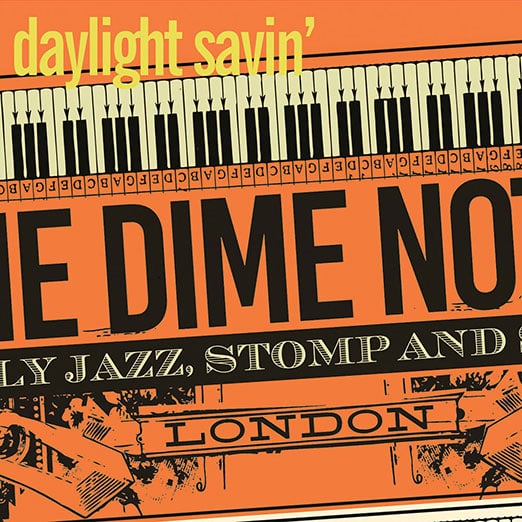
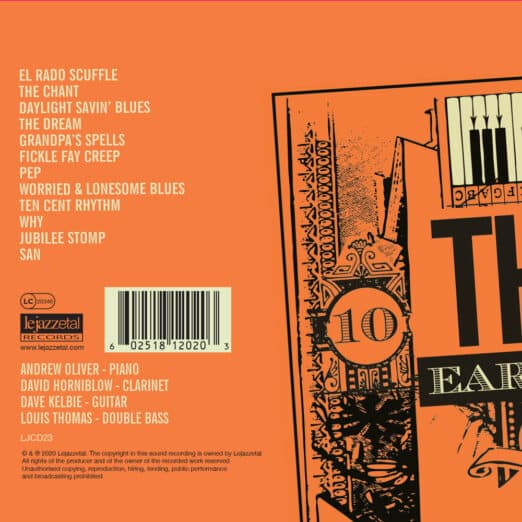
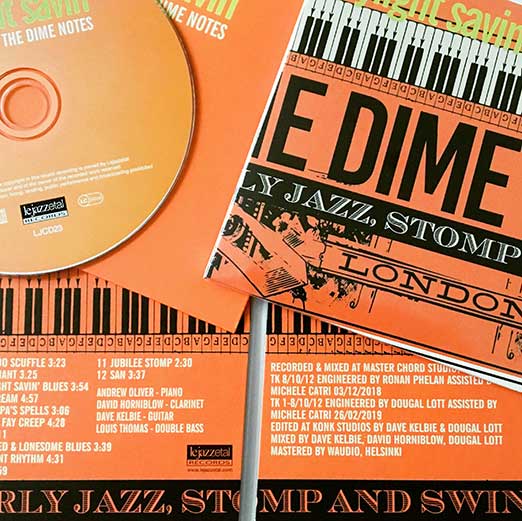

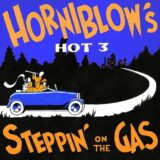
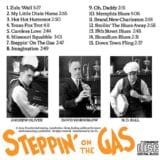
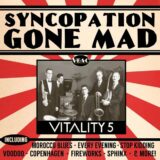
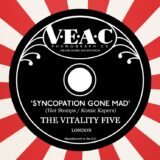
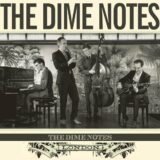
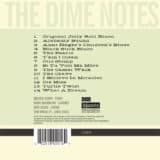

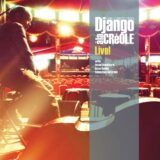
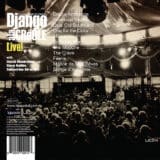
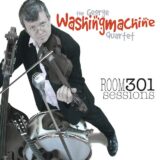
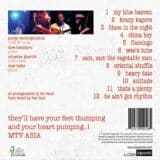
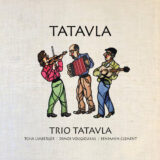
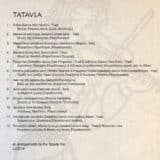
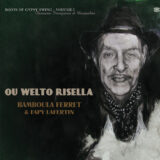
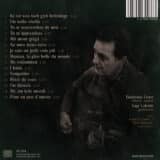
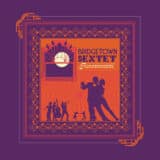

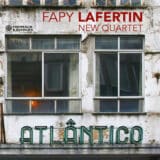
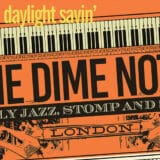
Peter Riley (verified owner) –
FANTASTIC, The Dime Notes do a wonderful job playing this traditional music without making it sound like it is embalmed. Lively, energetic and passionate, I mean this shit swings like crazy, great clarinet work from Horniblow and brilliant piano from Andrew Oliver who we love from his amazing Jelly Roll CD on this label. If ANY of the selections sound of interest you will not be disappointed with these great performances
Kelbie Dave (verified owner) –
Thank so much Peter for the review, which I now realise I can reply to. Really happy you’re liking The Dime Notes. Dave the guitarist
J. Larsen –
This CD by The Dime Notes contains a repertoire of classic jazz from the 1920s and is presented by four excellent musicians who all know and respect their sources and not least play with a captivating ‘drive’ that uplifts and entertains the listener from first note to last through all twelve songs. The musicians in The Dime Notes are Andrew Oliver (p), David Horniblow (cl), Dave Kelbie (g) and Louis Thomas (sb). As mentioned, the repertoire is classic 1920s jazz with compositions from i.a. Jelly Roll Morton’s book (five in all including highlights such as ‘Grandpa’s Spells’ and ‘Pep’ arranged for the quartet, also including Mel Stitzel’s ‘The Chant’, which belongs to Morton’s Red Hot Pepper repertoire). The CD begins with a captivating rendition of Jimmie Noone’s’ El Rado Scuffle ‘, and the album’s title track presents an equally captivating rendition of Perry Bradford’s’ Daylight Savin’ Blues’, which will be known from James P. Johnson’s book. James P. Johnson is also represented by ‘Worried & Lonesome Blues’ – originally a piano solo recording by Johnson – and in addition with ‘The Dream’, a composition by Jesse Pickett, but known from both James P. Johnson and Eubie Blake’s repertoire. ‘Jubilee Stomp’ by Duke Ellington gets a breathtaking rendition by the quartet, and the record ends with a nice rendition of ‘San’, a 1920s standard known from Bix Beiderbecke and The Wolverine’s recording and others. The CD also contains a composition by the quartet’s pianist Andrew Oliver, who contributes with his ‘Ten Cent Rhythm’, which fits in perfectly with the rest of the selected repertoire. All in all, the CD is an excellent example of how the spirit and music of original 1920s jazz lives on and is in perfectly good hands with the members of The Dime Notes. Recommended, definitely.